2023 marked the 50th anniversary of the British Library, and on October 25, 2023, the Library of Congress hosted an event to mark the occasion. Sir Roly Keating, the chief executive of the British Library, met in conversation with Librarian of Congress Carla Hayden. At the start of their conversation, Dr. Hayden teases Sir Keating about how young the British Library is, and he explains that 1973 was the year the British Library officially became a separate entity from the very old and very distinguished British Museum. You can watch the rest of their friendly banter and learn more about the British Library here.
Accompanying the event was a display of related collection items, and the Serial and Government Publications Division explored some British characters and creators from the Library’s comic book collections.
Captain Britain
Created in 1975, the very British character of Captain Britain emerged in Marvel’s United Kingdom publishing office from writer Chris Claremont and artist Herb Trimpe, both American creators. Brian Braddock is a young research assistant who becomes Captain Britain when, in a near-death experience, the wizard Merlyn offers him the Amulet of Right, endowing him with superpowers.
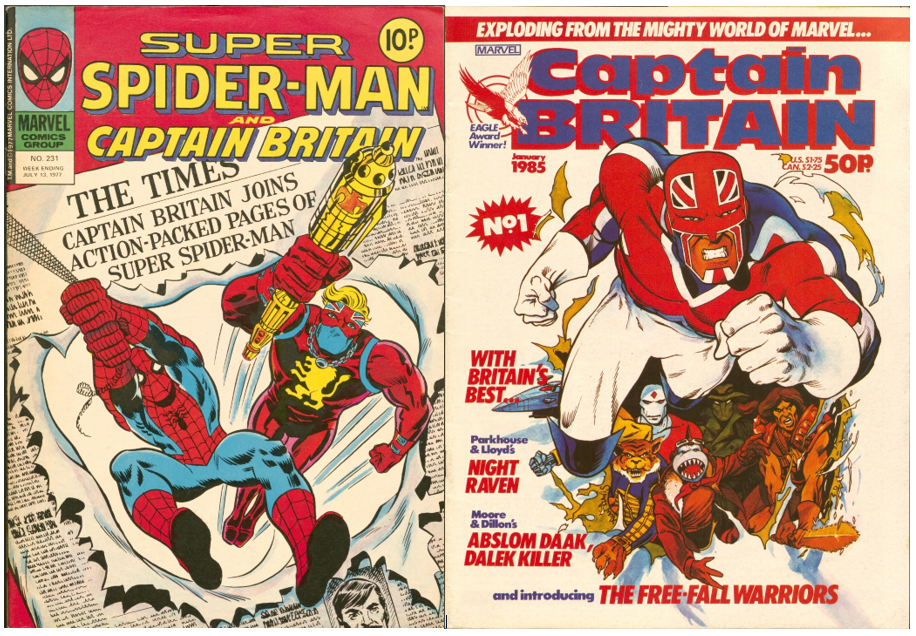
Stories with Captain Britain makes several appearances in anthology comics over the decades, such as Super Spider-Man. He also appears in various storylines of the series Excalibur in the 1980s and 1990s, which is the name of his superhero team. Captain Britain (who later becomes Captain Avalon) is frequently joined by X-Men characters and other British superheroes.
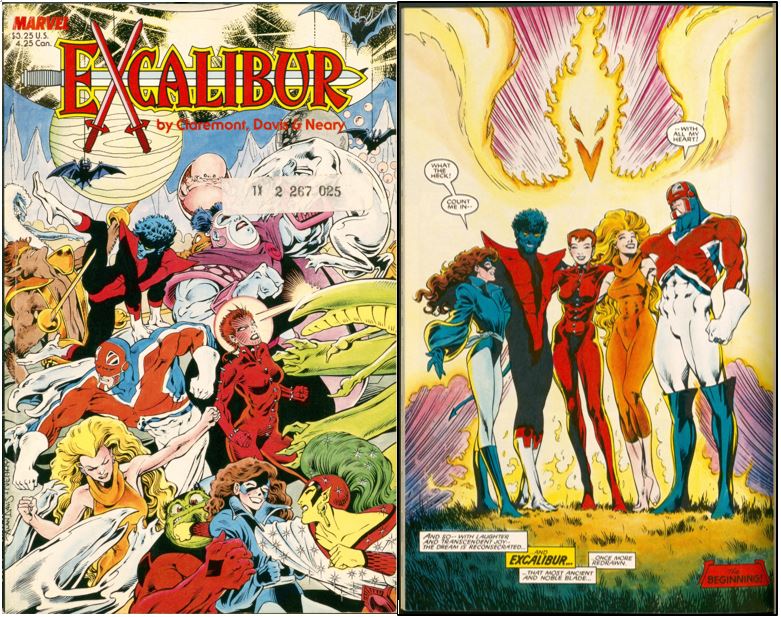
Alan Moore
While more widely known for Swamp Thing and Watchmen series, early in his career Alan Moore wrote for the revival of Captain Britain’s story from 1982 till 1984. Moore also revived Miracleman from 1985 to 1990, which is a uniquely British-created character.
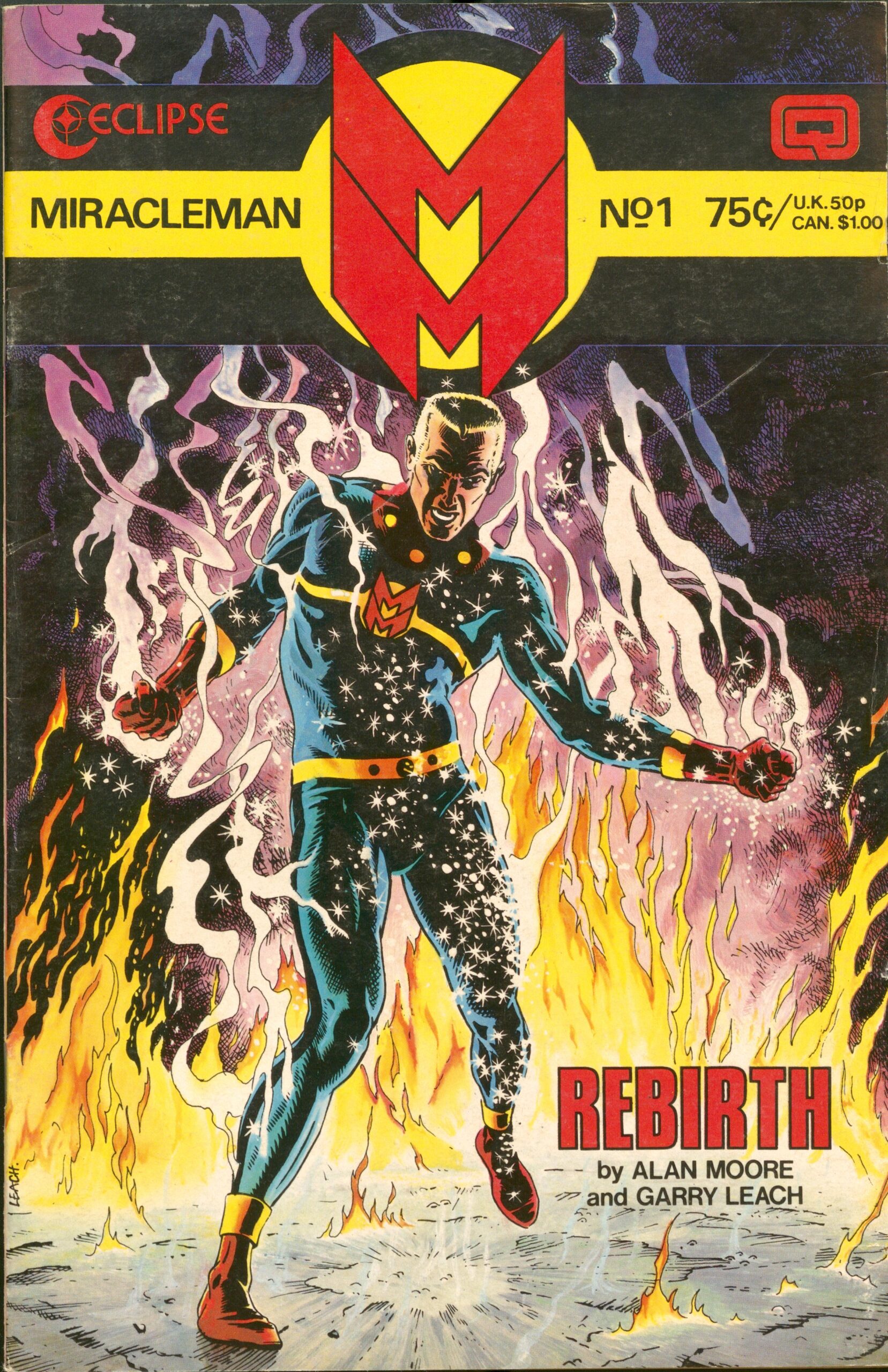
The character Miracleman was first known as Marvelman. In 1954, Mick Anglo created Marvelman for UK publisher L. Miller & Son, Ltd. They needed a new character to replace the Captain Marvel stories they had been reprinting from Fawcett Publications. When the content from Fawcett ceased, Angelo created Marvelman with original storylines to continue printing. In 1963, the Marvelman series ceased when L. Miller & Son went out of business.
Later in the 1980s, Eclipse Comics wanted to reboot the title with Moore as writer. However, the title was a little too close to other titles by DC and Marvel Comics, so the name of the superhero was finally changed to Miracleman in 1985. In his revival, Moore took the storylines to darker, grittier explorations of superheroes enforcing peace instead of simply saving the day.
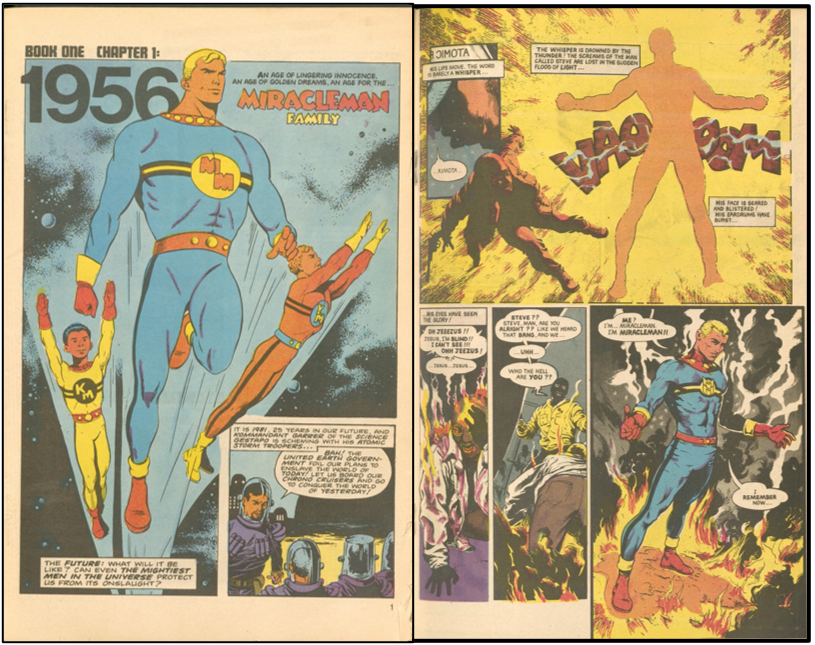
Neil Gaiman
The 75 issue-run of The Sandman is one of Gaiman’s most noted contributions to comics. Published by DC Comics from January 1989 to March 1996, the series won many Eisner Awards for creative achievement in American comics. The striking covers for The Sandman were done by Dave McKean, a frequent collaborator with Gaiman. When Gaiman picked up writing Miracleman from Alan Moore, McKean joined him in illustrating the covers, starting with no. 17 (June 1990).
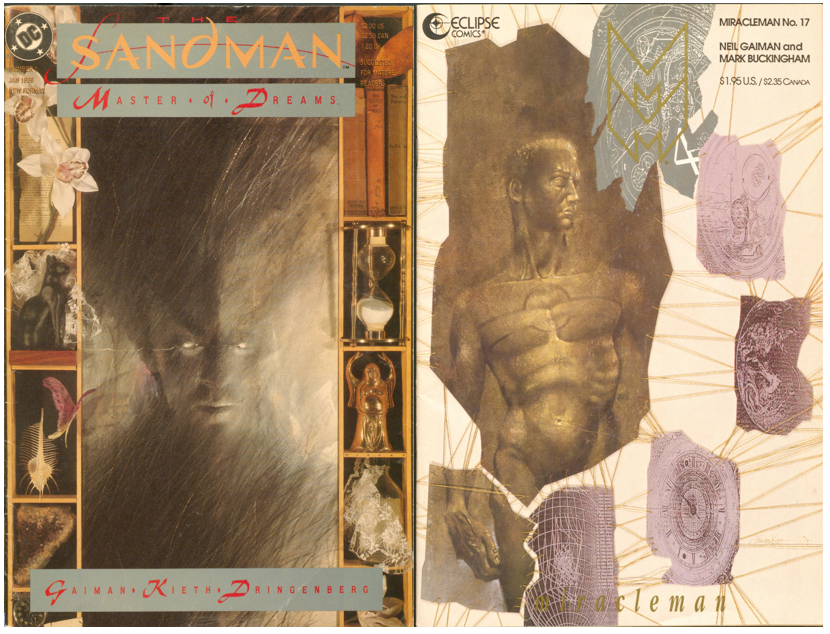
Real Heroes
Comic books supply nonfiction content too, where we find Winston Churchill as a British character included in our display. The American series was published by Parents’ Magazine Press from September 1941 to October 1946 and features heroes of the real world, especially focusing on World War II. George J. Hecht, president and publisher, tells readers in the issue’s opening letter, “you may wish you could be a hero, too, and fight for freedom… Your duty is to learn all you can.” In the story “Britain’s Top Man,” readers learn about Winston Churchill’s first term as Prime Minister (1940-1945) through colorful panels.
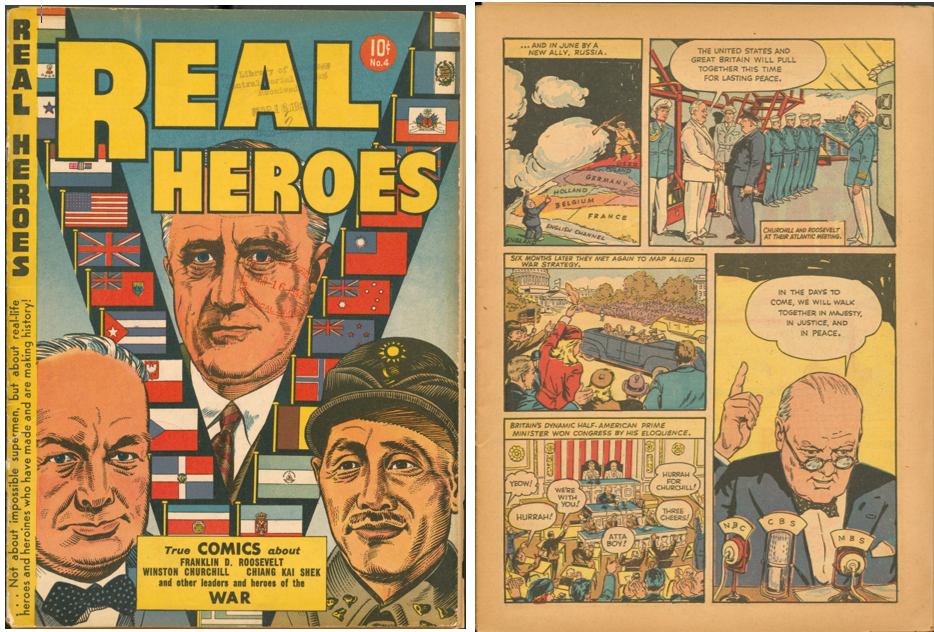
While Dr. Hayden and Sir Roly joked about a “friendly rivalry” at the end of their conversation, they also look forward to continuing the friendship between the two national institutions with more opportunities for inspiration and collaboration.
Other Resources:
Comics Through Time: a history of icons, idols, and ideas edited by M. Keith Booker (2014)
Grand Comics Database – a free resource of indexed comic books.
Find other Headlines and Heroes posts on comic books here.